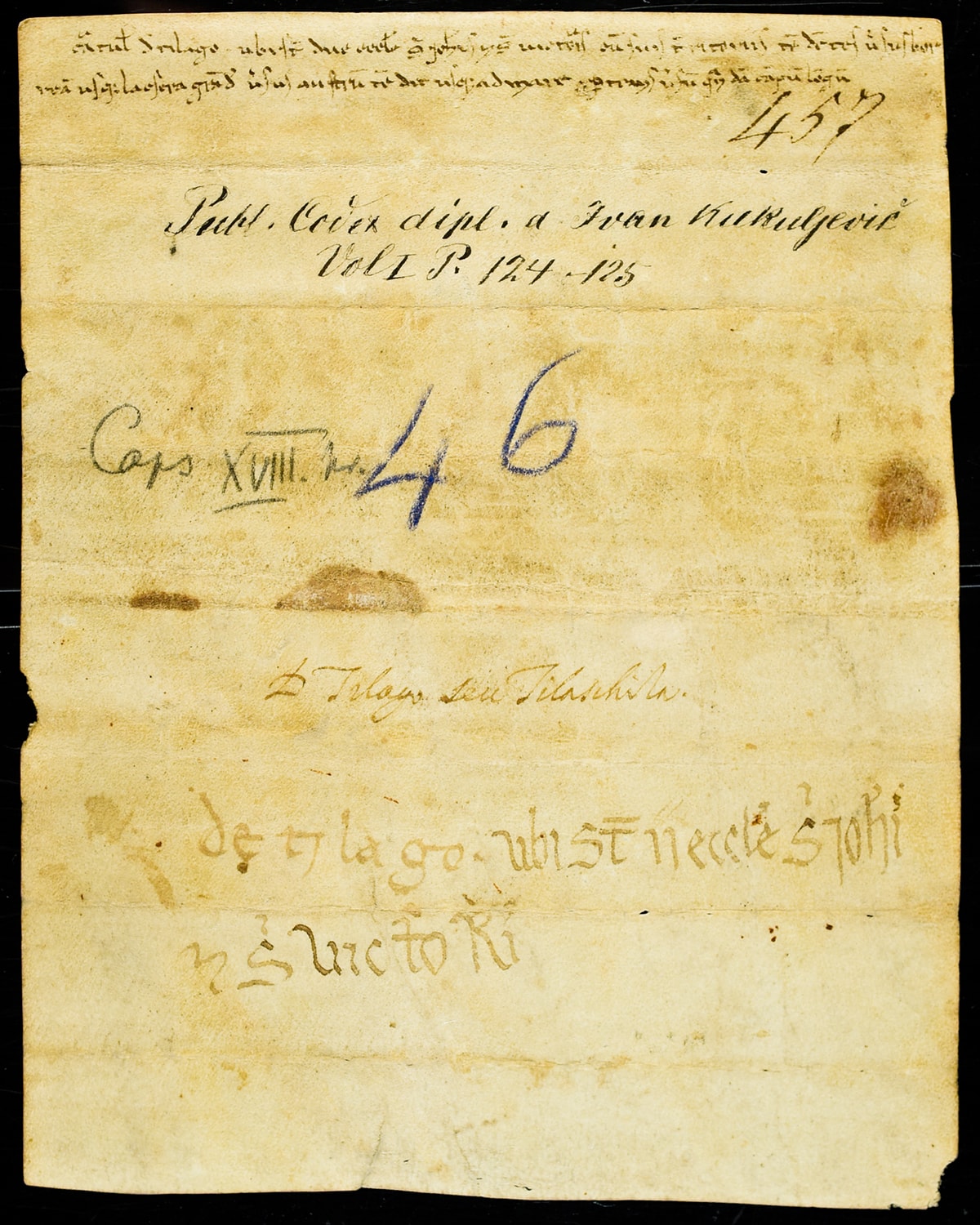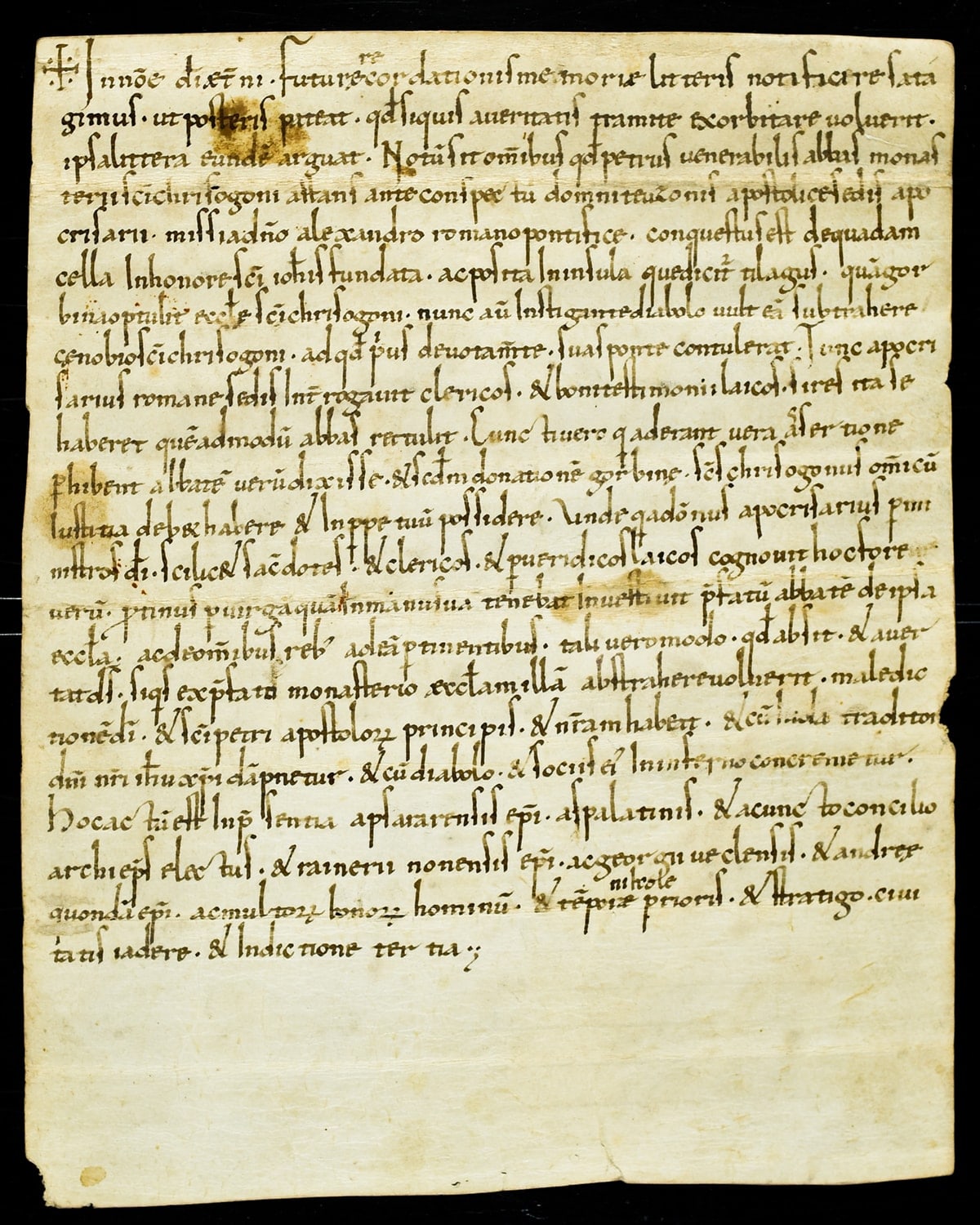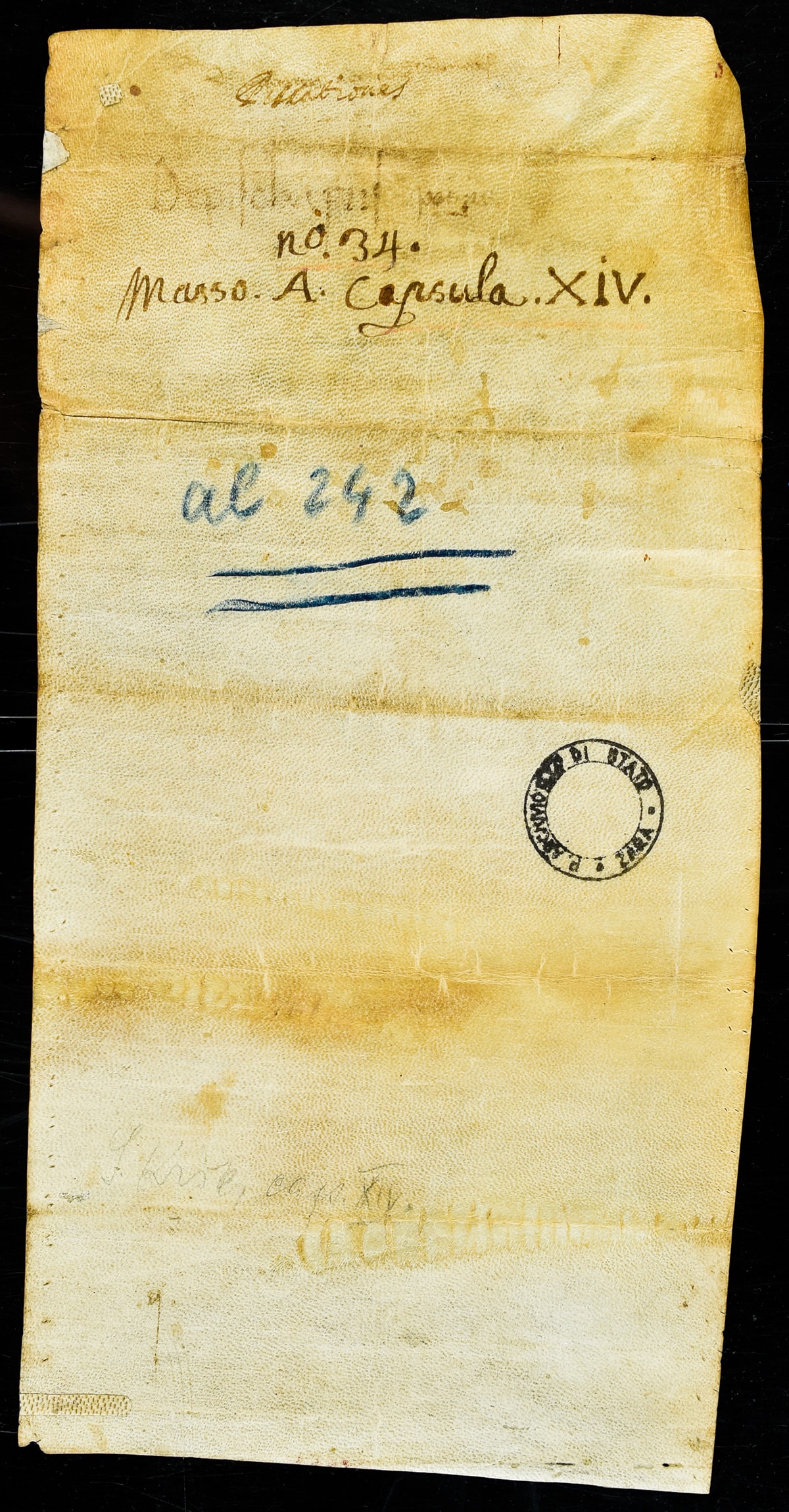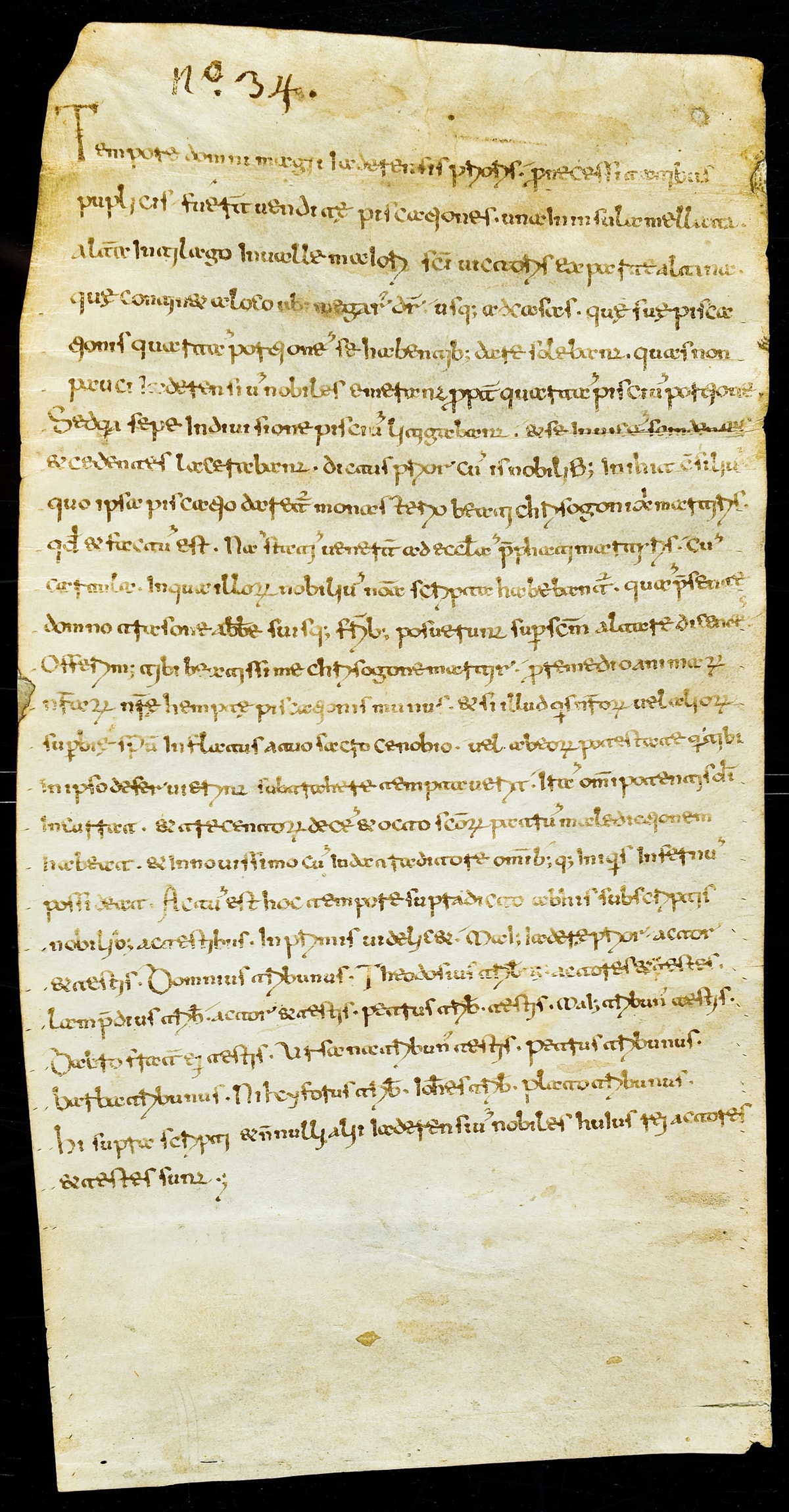


Historical documents
Dugi Otok was first mentioned in 950.
The oldest document in which Dugi Otok is mentioned is De Administrando Imperio written by the Byzantine Emperor Constantine Porphyrogenitus in 950, in which the names of the island of Zadar are stated. Dugi Otok is mentioned under the name Pizych, a toponym of which is preserved in the name of Čuh Polje in Telašćica.
Fishing in Croatia was first mentioned in a document from 995 – the Grant (Darovnica).
The Grant is a first class historical, economic and national Croatian document. It was prepared in Zadar in 995, and today it is placed in the state Archives in Zadar in the collection of the Benedictine monastery of St. Chrysogonus under number 363. It is written in beneventan script. The document is actually a grant in which the noblemen of Zadar give their right to fish around the islands to the Monastery of St. Chrysogonus in Zadar. It expressly mentions Dugi Otok (…in Tilago…) and a fishing area in the bay of …sancti Victoris… which starts at the bay of …Megarus… and stretches all the way to the houses that used to give the noblemen of Zadar one quarter of fish they caught. The Grant thus includes the first mention of fishing, but also certain locations on Dugi Otok Island, such as today’s toponyms Telašćica (Tilagus), Citorij (Valle sancti Victoris) and Magrovica (Megarus). According to the document, Magrovica Bay is a settlement, so when Constantine Porphyrogenitus states that there are no inhabitants on Dugi Otok, he probably refers to the Romans, because this document confirms the existence of houses in Magrovica (fishing settlement) in which Croats lived at the time. Furthermore, several names of noblemen and citizens of Zadar who were donors or witnesses when the document was written are mentioned in the document. There are noblemen with Croatian names among them (e.g. Dobro/Dabro, Trazo), and names of some Croats were probably written in their traditional Latin forms (Petrus). If Croats at that time managed to penetrate even into the noble class, and become city officials and religious leaders, it is certain that they are numerous in common occupations such as fishing. This confirms at least a thousand-year continuity of not only the fishing economy in Croatia, but also the continuity of language streaming directly from original Latin into Croatian (Sali) voice forms. The document, prepared in Zadar, was first published by Franjo Rački in 1877. (Documenta historae chroaticae periodum antiquam illustrantia, Zagreb).
NOBILES JADERENSES MONASTERIO S.CHRYSOGONI SUUM PISCATIONIS IUS IN INSULA TILAGO CONCEDUNT
Tempore domni Magii iaderensis prioris pro necessitatibus puplicis fuerunt uendite, piscationes: una in insula Mellata, altera in Tilago in ualle maiori sancti Uictoris ex parte altana, que continet a loco, ubi Megarus dicitur, uscque ad casas, que sue piscationis quartam portionem se habentibus dare solebant, quas non pauci iaderensium nobiles emperant propter quartam piscium portionem. Sed quia sepe in diuisione piscium litigabant, et inucicem sciendentes et cedentes lacerabant, dictus prior cum is nobilibus inihit consilium, quo ipsa piscatio daretur monasterio beati Chrisogoni Christi martiris. Quod et factum est. Nam statim uenerat ad ecclesiam prephati martiris cum cartula, in qua illorum nobilium nomina scripta habebantur. Quam presente domno Trasone abbate suisque fratribus posuerunt super sanctum altare dicentes:Offerimus tibi beatissime Chrisogone martir, pro remedio animarum nostrarum nostre hempte piscationis munus. Et si illud quis nostrorum uel aliorum, superbie spiritu infaltus, atuo sacro cenobio uel ab eorum potestate, qui tibi in ipso deseruierint, subtrahere temptauerit, iram omnipotentis dei incurrat et trecentorum decem et octo patrum maledictionem habeat et in nouissimo cum Iuda traditore omnibusque iniquis nefernum posideat. Actum set hoc tempore supra dicto ab his subscriptis nobilibus as testibus. Inprimis uidelicet Maius Iadere prior, actor et testis. Domnius tribunus, Theodsous tribunus, actores et teste. Lampridius tribunus, actor et testis. Petrus tribunus, testis. Maius tribunus testis. Dabro frater eius testis. Ursana tribunus, testis. Petrus tribunus. Barba tribunus. Nikyforus tribunus. Johannes tribunus. Plato tribunus. Hi supra scripti et nonnulli alii iaderensium nobiles huius rei actore et testes sunt.
Source of photograph: State Archives in Zadar
(HR-DAZD-336. Benedictine monastery of St.Chrysogonus in Zadar, parchment no. 2)
First mention of the Church of St.John in Stivanje Polje from 1060.
Transcript of a document from 1060 in which Teuzon, envoy of Pope Nicholas II, awards the chapel in honour of St. John on Dugi Otok Island, which was given to the monastery by Grubina, but then tried to deny the gift, to the Monastery of St.Chrysogonus. Written in beneventan script.
Source of photograph: State Archives in Zadar
(HR-DAZD-336. Benedictine monastery of St.Chrysogonus in Zadar, parchment no. 30)
First mention of the Church of St.Victor in 1195.
The Church of St.Victor was first mentioned in 1195 together with the Church of St.John in the Bull of Pope Celestine III: ˝…ecclesias sanctorum Iohannis et Victoris Tilagi …˝, but the name of St.Victor was mentioned even earlier, whereby there is reference of Telašćica Bay in the aforementioned document, the Grant oF St. Chrysogonus: ˝… in Tilago in valle maiori sancti Victoris“…, and it is preserved in the toponym of the Citorij Hill.
Source of photograph: State Archives in Zadar
(HR-DAZD-336. Benedictine monastery of St.Chrysogonus in Zadar)






